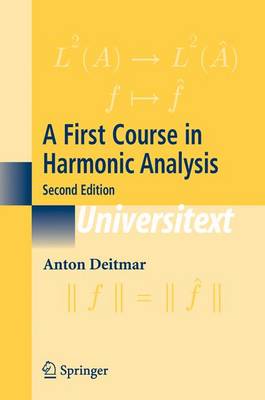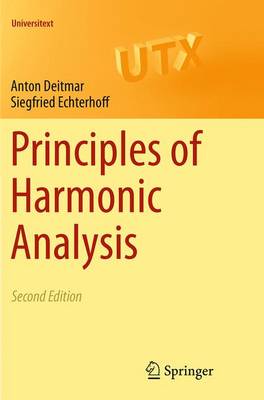Universitext
3 total works
This book is a primer in harmonic analysis on the undergraduate level. It gives a lean and streamlined introduction to the central concepts of this beautiful and utile theory. In contrast to other books on the topic, A First Course in Harmonic Analysis is entirely based on the Riemann integral and metric spaces instead of the more demanding Lebesgue integral and abstract topology. Nevertheless, almost all proofs are given in full and all central concepts are presented clearly.The first aim of this book is to provide an introduction to Fourier analysis, leading up to the Poisson Summation Formula. The second aim is to make the reader aware of the fact that both principal incarnations of Fourier theory, the Fourier series and the Fourier transform, are special cases of a more general theory arising in the context of locally compact abelian groups. The third goal of this book is to introduce the reader to the techniques used in harmonic analysis of noncommutative groups. These techniques are explained in the context of matrix groups as a principal example.
Principles of Harmonic Analysis
by Anton Deitmar and Siegfried Echterhoff
Published 21 November 2008
This book offers a complete and streamlined treatment of the central principles of abelian harmonic analysis: Pontryagin duality, the Plancherel theorem and the Poisson summation formula, as well as their respective generalizations to non-abelian groups, including the Selberg trace formula. The principles are then applied to spectral analysis of Heisenberg manifolds and Riemann surfaces. This new edition contains a new chapter on p-adic and adelic groups, as well as a complementary section on direct and projective limits. Many of the supporting proofs have been revised and refined. The book is an excellent resource for graduate students who wish to learn and understand harmonic analysis and for researchers seeking to apply it.
Automorphic forms are an important complex analytic tool in number theory and modern arithmetic geometry. They played for example a vital role in Andrew Wiles's proof of Fermat's Last Theorem.
This text provides a concise introduction to the world of automorphic forms using two approaches: the classic elementary theory and the modern point of view of adeles and representation theory.
The reader will learn the important aims and results of the theory by focussing on its essential aspects and restricting it to the 'base field' of rational numbers.
Students interested for example in arithmetic geometry or number theory will find that this book provides an optimal and easily accessible introduction into this topic.
This text provides a concise introduction to the world of automorphic forms using two approaches: the classic elementary theory and the modern point of view of adeles and representation theory.
The reader will learn the important aims and results of the theory by focussing on its essential aspects and restricting it to the 'base field' of rational numbers.
Students interested for example in arithmetic geometry or number theory will find that this book provides an optimal and easily accessible introduction into this topic.


